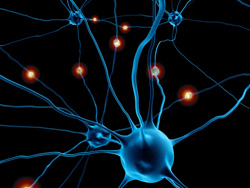Nanodevices for nervous system regeneration
With the advent of nanotechnology and the possibility to build electrical systems on the scale of atoms, the potential for the use of nano-engineered biochips in treating tissue and functional damage caused by CNS trauma and disease is creating new frontiers. The ‘Towards new generations of neuro-implantable devices: engineering neurons/carbon nanotubes integrated functional units’ (Neuronano) project was developed to investigate fundamental questions regarding interactions between nanomaterials and neurons. The researchers sought to exploit electrical control of the local cellular environment by nanomaterials that encourages neural regeneration and to develop nanodevices for extracellular CNS stimulation and recording. Carbon nanotubes (CNTs) offer excellent potential for integration with multi-electrode array (MEA) technology as they have the highest strength to weight ratio of any substance known to man. They can easily penetrate cell membranes and they have interesting electrical properties. The research team focused on complex but well defined CNS networks in culture: the hippocampus and neocortex from the brain and locomotor networks of the spinal cord. They studied how structures underlying electrical activity were organised when formed on electrically conductive nanosubstrates and how their organisation changed when subjected to specific molecular or chronic electrical stimulation by the CNT MEA devices. Project scientists demonstrated the ability of CNTs to play a role in neural integrative properties at the level of individual cells. In addition, they demonstrated that CNTs can be used as nanotools to re-engineer CNS neural connectivity when placed in the tissue. Finally, they evaluated MEA devices in relation to patterned and non-patterned electrical stimulation of CNS tissue. Neuronano have made significant advances in the use of human-engineered nanodevices to modulate neuronal connectivity and electrical activity of CNS tissue cultures with potential for application to neural regeneration in cases of trauma or disease. Eventual commercialisation of the outcomes could help restore CNS functions including but not limited to the senses, such as hearing and sight, speech and locomotion, and even cognitive functions such as learning and memory, thus enhancing the quality of life of millions of people.




